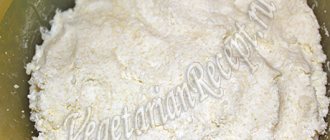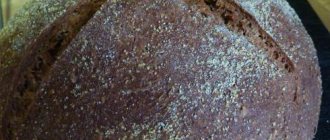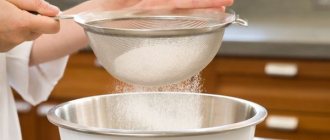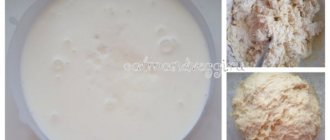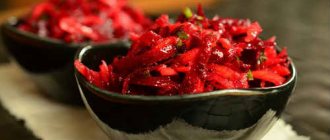Moonshine brewing dates back to the times of ancient Rus'. In those days, not a single ceremonial feast was complete without this alcoholic drink. This is not surprising, because moonshine has always been considered the best natural alcohol at all times.
Although nowadays it’s rare for anyone to cook it at home on their own, we still shouldn’t forget about ancient cooking recipes. Moonshine can be made from any natural ingredients - fruits, berries and even vegetables!
Features of wheat preparation
For moonshine you need to use high-quality and dry wheat. Rotted grains with mold cannot be used. Before use, wheat must be husked and sifted. In order to make high-quality mash, you cannot use freshly harvested wheat.
It is advisable that after collection it sits for a couple of months. When purchasing raw materials, you should be careful. Many producers use fertilizers and chemicals in the process of growing wheat. Good raw materials for moonshine should be clean and free of chemical impurities.
| Ingredients | Quantity |
| water - | 7 liters |
| wheat – | 1.5 kg |
| granulated sugar - | 1.5 kg |
| Cooking time: 14440 minutes | Calorie content per 100 grams: 110 Kcal |
- First you need to prepare the syrup. In a liter of water we dilute 200 grams of granulated sugar;
- We prepare the wheat, remove the husks and foreign debris and sift thoroughly;
- Pour wheat grains into a wide container and fill them with sugar syrup. It is advisable to use wide dishes, because in a container with a narrow neck the fermentation process will be delayed and the raw materials will not be of high quality;
- Leave for 3-4 days. During this time, the wheat will ferment and foam will appear;
- Then add 1.3 kg of granulated sugar, pour in 6 liters of water and close everything with a water seal. The mixture must be stirred periodically;
- In 10 days, the mash should completely replay. After this time has elapsed, all wheat grains must be removed from the solution. The solution must be completely cleared, so it is best to strain it through cheesecloth;
- Next, we distill the mash through a moonshine still. It should be distilled 2-3 times;
- The result should be a pure, natural and high-quality alcoholic product with good strength.
Wheat mash without yeast for moonshine
For the mash you will need the following products:
- 30 liters of water;
- Wheat – 4 kg;
- Granulated sugar – 4 kg.
- We prepare the basis for raw materials. We clean the wheat grains from husks and foreign debris and carefully sift them;
- You need to pour a quarter of the wheat, about 1 kg, into a plastic or metal container. The grains should be leveled to form an even layer;
- Fill the wheat with water so that it covers it by 4-5 cm from above;
- Cover the container with gauze or a waffle towel and place in a cool place. Leave for 1-2 days, during which time the wheat should germinate;
- After this, add half a kilo of granulated sugar to the container with the sprouted grains and mix everything thoroughly with your hands. If the mass turns out to be too thick, then add a little water;
- Next, cover everything with a gauze bandage, put it in a warm place and leave for 10 days. During this period, the entire mixture will infuse and a leaven will be obtained, which will be a substitute for yeast for mash;
- The finished starter needs to be poured into a glass bottle, add 3.5 kg of granulated sugar and 3 kg of wheat. Pour warm water into the resulting mixture (up to 20 degrees C);
- A rubber glove with a hole in the index finger is put on the neck of the bottle or a water seal is installed;
- Then the bottle should be placed in a room with a temperature of 18-24 degrees. Fermentation will last about 7-10 days;
- After the glove is deflated or the water seal stops producing bubbles, the mash is drained without sediment. And it can be distilled through a moonshine still;
- The sediment can be used to prepare 2-3 servings of mash. To do this, pour 4 kg of granulated sugar into it and add water. The best moonshine is obtained from 2-3 times, then the quality deteriorates.
Wash from grain Technological process.
This process is not particularly complicated, but it requires precision; the final product greatly depends on this; it is necessary to accurately withstand the entire range of temperatures, so we will need an accurate thermometer. I’ll warn you right away and answer the question….
You definitely can’t do it by eye!
To saccharify, for example, 4-5 kilograms of grain, 1 kilogram of malt is required.
You need to prepare malt.
We take the grain and pour it into an enamel pan or a food-grade plastic tank. Fill the whole thing with water 5 centimeters above the level of the grain and mix it so it’s better to wet it, remove all the floating debris. After 5-8 hours it is necessary to replace the water, then we replace the water a couple more times at short intervals. The soaking time for grain is about a day.
Next, you need to drain all the water, spread the grain for germination in a small layer of 7 to a maximum of 10 centimeters. The room should have ventilation with an average temperature of about 17 degrees; the grain on top can be covered with damp gauze for more confident germination. It is important to remember that when the grain swells, it increases in volume significantly, so leave a gap in the container. The germination process in cereals lasts approximately 8 days. The length of the sprouts should be within 4-8 millimeters; when bitten, the grains have a sweet-bitter taste and a cucumber-like smell. Our green malt is ready. This malt should be used as quickly as possible because its enzyme activity is highest during this period of up to 3 days. But malt can also be preserved for use; to do this, it must be dried at a low temperature of 40 degrees and all the sprouts must be torn off. Such malt should have a moisture content of no more than 4%; it can be stored for quite a long time, several years in a dense container. But there is also a significant disadvantage of such malt: it saccharifies raw materials worse than green malt and the difference of about 20-30% is significant; more dried malt is needed.
Our green malt must be ground in a meat grinder together with the sprouts very finely, as soon as possible, placed in water at a temperature of 27 degrees in the proportion of about 3 liters of water per 1 kilogram of malt. With this operation, you get the so-called malt milk; it must be used within 24 hours, then the activity will decrease.
Next is the process of preparing starch-containing raw materials; if you use one malt, that is, you have sprouted all the wheat or barley, then you do not need this process.
The process of preparing starch-containing raw materials.
We will need to grind the grain as finely as possible, it would be great if it turns into flour, but it’s not the point of simply re-crushing; just cooking longer will do. By the way, you can immediately take the required amount of rye or wheat flour.
Take a large container, put our raw material, grain or flour, into it and carefully add warm water at a temperature of 50-55 degrees, constantly stirring to avoid lumps. The approximate proportion is 1 kg of flour per 4-4.5 liters of water, no less, or more.
Heat the resulting mixture in any way to 58 degrees and keep the set temperature in this range with a gap of 1 degree for about 15 minutes. Then we increase the temperature to 65 degrees and hold for another 15 minutes. Next, bring to a boil and cook, just cook like cabbage soup for about 2 hours, stirring thoroughly every 10-20 minutes. This is where the grinding fraction and the quality of the grain are important: the larger the grain, the longer it takes to cook, as I said above; in short, the starch mass should be homogeneous in the end.
Now we have prepared starch-containing raw materials for saccharification. Next, we need to cool our mash to a temperature of 65 degrees and pour in a thin stream of malted milk that we prepared earlier. At the same time, constantly stirring so that the milk is distributed as evenly as possible throughout the raw materials. Next, cover with a lid and keep the set temperature within 56-65 degrees, of course there is a gap, but you can’t heat it more than 70 degrees, the enzymes contained in the malt will die and the process will stop, and the saddest thing is that it won’t be possible to restore it. The temperature must be maintained for 2 hours and stirred after 20 minutes so as not to burn on the bottom. You can control this way that the fully prepared wort should be sweet.
And also with malt, if we use pure malt, you say.
And from it we prepare malted milk as described above, heat it to a temperature of first 55 degrees, hold it for 15 minutes, then raise the temperature by 5 degrees and hold it for 20 minutes, after another 5 degrees, hold it for 30 minutes, then keep the set temperature within 55-67 degrees for another 1 hour. the wort will also be sweet.
Now we have a completely saccharine wort; it must be cooled to the temperature at which the starter or yeast is added, 24-28 degrees. To do this, it is better to use a chiller or place the container in cold water and stir constantly; this is an important cooling process that must be carried out as quickly as possible. Pour the finished wort at a given temperature into the fermentation container, not all the way to the top, leaving a gap for foam to form. Add yeast in a proportion of 10 grams per 1 kilogram of raw materials.
Mix very well and place in a warm place with a temperature of 20-27 degrees for fermentation, preferably under a water seal, but it doesn’t matter if you use a medical glove.
Fermentation time depends on the temperature and quality of the raw materials and varies within 4-10 days. When the water seal stops gurgling, your mash becomes lighter and the sediment at the bottom will fall out. Try her mash to taste; it should be bitterly sour without any sweetness, which means everything worked out.
Yes, it is best to ferment the mash in glass, but you can also use an enamel pan, but not iron or plastics; they may not withstand the active environment and ruin the whole work; plastic decomposition products will get into the moonshine.
Now to the recipes for various mash.
Wheat moonshine without yeast and sugar
Instead of granulated sugar and yeast, steaming and malt are used
To prepare the brew you will need the following ingredients:
- 2 liters of water;
- Fresh hops - 1 handful, if dry hops are used, then 2 handfuls are better;
- One handful of wheat flour.
- First you need to prepare the wheat. To do this, the cleaned grains are laid out in a wide container and filled with water so that it completely covers them by 2-3 cm;
- Close the container, put it in a cool place and leave for 3-4 days. During this time, the starter will begin to ferment and foam will appear;
- Let's park. To do this, add water to the hops and wheat flour. Let it sit for a couple of days;
- Since this method does not involve adding sugar, you can use potatoes, beets, pears, apples, and berries as the main product. We put any of these components in a glass bottle, add starter and leaven to them;
- Mix everything well and add 5 liters of warm water;
- Close the container with a water seal and leave for 8-12 days. It needs to be stirred periodically;
- After the mash has finished drinking, you can start distilling the moonshine;
- It is worth noting that moonshine made from wheat is much tastier and more enjoyable than moonshine made with yeast and granulated sugar.
The time has come: let's see how to make moonshine with wheat
As soon as the wheat mash is ready, immediately begin distillation, without leaving the mass to ferment longer than expected. The first step is to strain the liquid well using cheesecloth.
The remaining sediment and wheat grains can be reused for fermentation if you want to get a softer moonshine. In this case, do not drain the water completely so that the grains do not have time to dry out while you are brewing moonshine.
Before you make homemade moonshine from wheat, get a special cube. You can buy such a device for moonshine in a store or make it yourself from various available items (pots, flasks, etc.) and start distilling - distilling moonshine.
There are two ways to proceed here: simple or fractional distillation. In the first case, you get raw alcohol, the first drops of which retain harmful impurities and give an unpleasant odor to the drink.
Let's say more: this moonshine, which has not undergone fractional processing, contains a proportion of methyl alcohol, various aldehydes and other substances that are very harmful to health.
Full distillation will take almost twice as long, but the result is worth it: the drink will be completely purified and acquire a pleasant aroma (regardless of what recipe you used to make wheat moonshine).
Technically it looks like this:
- Remove the head fraction, that is, the first 10% of the alcohol formed, without regret. It is there that harmful impurities are contained that make the drink undrinkable. The smell of this “primary” liquid gives off acetone and metal, which spoils the aroma of the final product.
- The tail fraction is similar to the first, since it also spoils the smell of the drink due to the formation of fusel oils. This happens when the temperature in the cube reaches about 92-95 degrees. This completes the sampling of the drinking part.
Moonshine, made using the correct technology, is considered the “cleanest” homemade drink, in contrast to simple distillation - don’t forget about it!
We also recommend that you read: how to make honey moonshine
Moonshine from sprouted wheat without yeast
The following components will be required:
- 5 kilograms of wheat;
- Granulated sugar – 6.5 kg;
- 15 liters of water.
- Pour the wheat into a wide plastic or metal container. We level it so that it is in an even layer;
- Add 1 kg of granulated sugar to it;
- Pour water into the container with wheat. It is advisable that it covers it by 2-3 cm;
- The top of the vessel must be covered with gauze, and the gauze must be folded several times;
- Place the container in a warm place. It is advisable that the place is well warmed by the sun;
- After the first sprouts appear, add a small amount of water to the container. You need to constantly add water to prevent the sprouts from drying out. However, it is worth remembering that wheat seeds can rot from excessive amounts of water. So everything good should be in moderation;
- You need to germinate the seeds until the sprouts reach a size of 5 to 7 mm. Germination takes about 7-10 days. After approximately this period, the sprouted wheat or, in other words, the malt for infusing the mash will be ready. Now you can start preparing the main raw materials.
Preparing mash and distilling moonshine:
- Place the sprouted wheat in a glass bottle and fill it with water (7.5 liters);
- Add 1.5 kilograms of sugar there. Leave for 3-4 days;
- After the starter is ready, add the remaining water, add the remaining granulated sugar and cover it with a rubber glove with a hole in the index finger;
- Place the bottle in a warm room with a temperature of 18-24 degrees and leave for 7-10 days;
- You can start distilling moonshine when the rubber glove is completely lowered;
- Next, through a special moonshine still, we begin distilling the moonshine. Moonshine from sprouted wheat is high-quality, natural, with a pleasant taste, and most importantly, with good strength.
Take note of our recipe for making Baileys liqueur at home.
You will love the recipe for kvass with a degree, just what you need in the summer heat! Read how to do it.
Find out all the secrets on how to grow your own kombucha from scratch. Let this tasty and healthy drink always be in your diet.
Helpful cooking tips
- If you don't have wheat on hand, you can use corn, peas, barley or rye instead. Based on this raw material, an alcoholic drink will be no worse than one made from wheat. It will be of good quality and high strength;
- When soaking wheat grains in water, be sure to ensure that they do not sour. The starter needs to be stirred periodically;
- Do not throw away the remaining grounds after straining. You can add water, granulated sugar and add mash. The moonshine will turn out even better and much tastier the second time;
- To check whether the mash is ready for distillation, you can use a trick - light a match and bring it to the mash, if it burns, then that means that the raw material is ready for distilling moonshine;
- It is advisable to clean the finished moonshine. To do this, you can use a couple of tablets of activated carbon. The tablets should be crushed to form a powder and poured into a jar of moonshine. For 1 liter you will need 50 mg of activated carbon. We put the jar in a dark place for a week. Also, in addition to activated carbon, you can use potassium permanganate. But it should be poured in small quantities.
Making moonshine is a labor-intensive process that requires a lot of patience. To begin with, it’s worth studying the whole process, understanding all the nuances of preparing, infusing the mash and distilling moonshine from it. Because only with full compliance with the entire recipe can you get an alcoholic drink of the highest quality.
Some useful tips from experienced moonshiners
In theory, making moonshine with wheat is very simple, but when it comes to practice, sometimes unforeseen situations arise. Most often, they lie in wait for newcomers to this business who have not yet had time to gain comprehensive experience. We will give the most common examples and tell you what to do in such cases:
- After the allotted time, the wheat still did not germinate. There is no point in waiting for sprouts after 5 days, so get rid of these grains and stock up on others. Most likely, they were of low quality or you didn’t guess the age correctly (too old/fresh harvest).
- When fermenting through a bottle, no sprouts are visible. There is nothing wrong with this, since the determining element at this stage is the process itself: if the air comes in bubbles and the grains “walk” around the container, then everything is in order.
- If fermentation stops and does not resume after 2 days, you can get rid of the starter. Unfortunately, something went wrong and the yeast stopped working.
- The consistency of the mash resembles jelly. This is also not scary, since there is a lot of starch in the mass. Just stir the mixture every day, shaking occasionally.
- If you decide to replace sugar with honey or jam, pay attention to the proportions - they will also change. For example, 1 kg of honey will require approximately 7 liters of water (sugar is 2 times less).
We conclude our review with a useful note on preparing malt, which will help give the drink the desired taste:
- green wheat malt gives moonshine softness and a sweetish taste;
- rye malt makes the drink harder;
- barley malt is somewhat reminiscent of whiskey.
By the way, types of malt can be mixed and used in one recipe. Therefore, having gained experience in moonshine making techniques, you can safely experiment with flavors and surprise your guests!
Proven recipes for mash for moonshine from wheat at home without yeast
Moonshine made from wheat without yeast was one of the most popular alcoholic drinks in ancient Rus'. It was made for every holiday. Many families kept their own unique cooking recipe, which was carefully passed down from generation to generation. Largely due to this, moonshine made from wheat remains popular today.
How to choose wheat
The main thing to remember is the rule on which the quality of the grain mash and the final drink depends - you need to choose the best premium wheat. The spoiled, rancid taste of the grains will spoil the moonshine; it will become bitter and have an unpleasant odor.
Recommendations for choosing grain:
- Must be dry
- It is strictly forbidden to use moldy grains
- You cannot use wheat that was harvested less than two months ago.
- Grains must be without husks and debris
Selection and preparation of ingredients
The quality of wheat moonshine directly depends on the grain from which it will be prepared. It is not recommended to take freshly harvested wheat, as it gives worse results. It is best to supply raw materials that have been in storage for at least 2 months and up to a maximum of 1 year. The grains should not be damp, have a foreign odor, or be covered with any coating; it is advisable to select the highest grade and quality. Good alcohol comes from sprouted grains.
If the soaked wheat grains have not begun to germinate within three days, then they must be thrown away, since the product turned out to be of poor quality and will not give any effect in the future.
Recipes
At home, you can make moonshine from wheat without yeast in several ways. Each recipe is quite simple and requires several steps:
- sourdough preparation
- production of wheat mash
- distillation
The finished product is of high quality and can be drunk neat or as an ingredient for cocktails.
The fermentation process of yeast-free mash differs from the fermentation of mash with yeast. The smell is more grainy, reminiscent of kvass, and bubbles are not formed as actively. Distillation begins when the sweetness disappears. It is not recommended to wait a very long time for the complete cessation of fermentation; in this case, there is a high risk that the mash will sour.
Yeast starter from wheat
Before making mash from wheat, you need to prepare a ferment using wild yeast.
Ingredients:
- Wheat grains - 1 kg.
- Water - 1 liter
- Sugar - 0.25 kg.
Preparation:
- Prepare sugar syrup, pour water into a saucepan and add sugar, start heating until the sugar is completely dissolved
- Cool the syrup to 30 degrees
- Prepare the wheat; there should be no husks, impurities or dirt left in it.
- Pour it into a wide plastic or metal dish in an even layer
- Pour in sugar syrup so that the water covers the grain by 3-4 centimeters
- Cover the dishes with gauze or a towel and place them in a warm place for 5 days until the fermentation process begins.
- After soaking the grain, it must be constantly stirred at least once a day, otherwise it may turn sour.
- The beginning of fermentation can be understood by the release of foam and hissing
- The starter is ready, now it can be used for any mash instead of yeast
We recommend that you familiarize yourself with the universal recipe for making moonshine without yeast; you will learn how and what you can use to make the starter.
Wheat and sugar mash without yeast
Ingredients:
- water – 25 liters
- sourdough – 2 liters (all from the recipe above)
- sugar – 5 kg.
Preparation:
- Mix water and sugar in a proportion of 1 kg in a saucepan. sugar and 0.5 liters of water
- Heat over low heat until the sugar and water turn into a golden syrup.
- Pour the remaining water and sugar syrup into a fermentation container of a suitable size and stir
- Achieve a mash temperature of 25-30 degrees so that the yeast does not die
- Add wild yeast starter
- Wear a glove with a small hole in the finger over the neck or use a water seal
- Leave to ferment in a dark place at room temperature from +20 to +25 degrees for 10 -14 days
- When the mash on wheat without yeast has finished fermenting, remove from the sediment and strain through cheesecloth into a distillation cube so that the mash remains absolutely clean
- Distill twice
The remaining sediment with grain can be used to prepare several more servings of mash. After the third use of the starter, it is better to throw it away, since the activity of wild yeast decreases.
Wheat mash without yeast and without sugar
There are several recipes for homemade wheat moonshine without the use of yeast and sugar:
The first method is when wheat is saccharified with malt (see recipe for a mash made from wheat and malt), green sprouted on your own (see how to make malt at home) or dry purchased in a store and instead of yeast, which is recommended to be added to the recipe, sourdough is added, as it is called do as written above. It is fermented and distilled twice.
The second method is when only wheat malt is taken, a malt mash is prepared (see recipe for malt mash or recipe for bread wine), and instead of yeast, sourdough is added. It is fermented and distilled twice.
Moonshine made from sugar-free wheat is soft; its taste is superior to that of moonshine made with cultivated yeast.
Wheat mash without yeast
The following recipe for mash with wheat without adding yeast is done like this: make everything according to the recipe for moonshine from sprouted wheat (follow the link) and instead of yeast, add the sourdough recipe described above.
No sweetener or yeast
This is considered one of the cheapest cooking methods. At the same time, the taste and aroma of the finished product is not lost. Hop cones will replace all the necessary components. To do this, you will have to carry out the stages of steaming and malt. Monitor each of them, because the process will take a lot of time and effort.
For steaming, prepare the following components:
- coarse wheat flour – 400 g;
- mineral water – 2 l.;
- hops – 3 handfuls of cones.
For malt prepare:
- grains – 3 kg;
- mineral water – 6 l.
If prepared correctly, it will produce a high strength. It will not contain any other odors or bready taste.
Step by step process:
- Clean the grains from debris and fill them with heated water. It should cover the main component by 2.5 cm. Cover with a cotton cloth and tie with an elastic band. Place the filled container in a warm room out of direct sunlight. Leave for several days until foam appears. This will signal that the wild yeast has begun fermentation.
- You should also park it. Cover the hop cones with boiling water for 30 minutes. After draining the liquid, add flour and cover with a nylon lid. Place in a warm room for several days.
- When the specified time has passed, make a brewed malt mixture. Mix thoroughly and add additional ingredients in the form of sugar beets, apple and pear mixture (60 g per 1000 ml of liquid). This is necessary to activate the fermentation process due to the lack of sugar. If you don't have fruit, you can add a kilogram of stale rye bread.
- Mix all the ingredients and pour in another 5 liters. water.
- Cover the container with a water seal or medical glove. Pierce one of your fingers in it using a thin needle.
- It takes 1-2 weeks to ripen in a dark place, where it is important to maintain room temperature.
To determine the degree of readiness of the mash, look carefully at the color and taste it. At the end of fermentation, do distillation. The process must be carried out several times to remove all unpleasant odors.
Distillation
For information on how to properly distill such mash, see the article Wheat mash for moonshine.
If you want to get bread vodka according to the mash recipe with wild wheat yeast, instead of the second distillation, do rectification and get high-quality alcohol, dilute with water up to 40%, drive through a coal column and let rest in glass for 7 days.
Making moonshine is a long and labor-intensive process that requires patience and professional skills. Before you get started, it is better to familiarize yourself with all the nuances and recipes for wheat mash for moonshine. Only if you follow the tips and technology can you prepare a high-quality alcoholic drink.
Distillation of mash into moonshine and cleaning
The final stage of moonshine brewing is distillation, which is best done in several stages to achieve maximum purity of the product. If you use sprouted wheat mash without yeast and sugar, you should not clean it with bentonite. This type of mash is already quite clean, and bentonite neutralizes the smell of wheat and other aromatic components.
First distillation
The task of primary distillation is to extract all the alcohol from the mash as quickly as possible, since during long distillation it contains fermentation products that negatively affect the quality of the drink. To do this, turn on the burner under the distillation cube to maximum and drive until there is no alcohol left in the mash.
Intermediate cleaning
After distillation, the quality of the product is still quite low. It contains a large amount of fusel oils and harmful impurities. To get rid of them, you can subject the moonshine to purification, which consists of two parts:
- Oil cleaning.
- Activated carbon cleaning
Before cleaning, the product is diluted with water up to 15% and poured into a plastic bottle with a lid so that there is still room in it. Add refined sunflower oil to it at the rate of 20 ml per 1 liter of liquid and shake vigorously until a white emulsion is formed. Let the emulsions sit for several hours until they are completely separated into layers: the upper oil layer and the lower transparent one. Separate the top layer. This can be done using an IV tube attached to a 20 cc syringe, or using a separatory funnel.
After cleaning with oil, pass the moonshine through a carbon filter. It is made from a plastic bottle, cotton wool and activated carbon. To do this, cut off the bottom of the bottle, place a layer of cotton wool in the neck, pour crushed activated carbon on top at the rate of 10 g per 1 liter and cover it with another layer of cotton wool.
When using a wheat mash recipe, it is important for moonshine to preserve the aroma, which is partially lost when using intermediate purification. Therefore, it can be replaced with additional distillation.
Second distillation
A further distillation process is needed for final purification from impurities and unpleasant odors. The moonshine still with moonshine is placed on high heat, but as soon as the first drop begins to stand out, the temperature is reduced to a minimum. The first 50 ml of liquid for every kg of sugar contains toxic impurities, so it is better to pour out this part of the alcohol or use it for household needs, but not drink it. We collect moonshine until its strength reaches 40%.
The drink is ready to drink.
Wheat moonshine recipes at home
In ancient times, the word “moonshine” denoted the stage of the hunt, when a person drove the animal into a trap. Recently, this is the name for a homemade alcoholic drink. In Rus', wheat moonshine has been prepared since ancient times. It was the most common and favorite drink, without which not a single merry holiday could be completed. Let's look at several recipes on how to make moonshine from wheat at home. The drink is prepared from natural raw materials, so it retains a good rich taste.
Recipe options for intoxicating drink
Wheat mash has a sufficient number of recipes, so the field for experimentation is wide. Often, moonshiners, along with classic recipes, try innovations, partially changing the proportions to their own taste, or make unusual moonshine with kefir.
There are dozens of preparation methods, but not all of them allow you to get a truly worthy drink that your guests will highly appreciate. Therefore, we choose the best and time-tested recipes for wheat moonshine, which are prepared at home.
Let's start with wheat mash with added yeast
Alcoholic yeast almost doubles the fermentation process because it acts as a powerful catalyst. If you have already prepared wheat moonshine, but without adding yeast, the time difference will probably be very pleasing. So, for yeast moonshine from wheat we will need:
- 5 kg sugar;
- 250 g yeast;
- 3 kg of wheat;
- 25 liters of water.
First, we germinate the wheat (using the standard technology described above). As soon as the grains sprout, we begin the sourdough.
Pour water at room temperature into a container with a wide neck (you can use a simple saucepan). Separately dissolve the yeast and add it to the water together with sugar. Mix thoroughly and send for fermentation.
As soon as the mass ferments, add sprouted wheat to it and leave until completely ripened. We still determine readiness visually and taste it: the grains have settled, the liquid has become transparent, has a bitter taste and smells of alcohol.
The recipe for this wheat mash has a characteristic feature: at the beginning of fermentation, the grains rise to the top, and upon completion, they settle to the bottom. The indicated proportions allow you to get from 7 to 8 liters of high-quality homemade drink of high strength (about 43-48°).
Wheat moonshine at home
Grain moonshine tastes many times better than that made from sugar mash. Making wheat moonshine takes a lot of time and you need to apply all your efforts.
But the end result is a delicious, aromatic alcohol with a mild sweet aftertaste and is easy to drink. If moonshine from wheat is made well, then it belongs to the category of high-quality artisanal alcoholic drinks.
In the 80s of the 20th century in the USSR there was a ban on alcohol and sugar was also difficult. But there was wheat and it was inexpensive, so people made homemade moonshine. Grain moonshine has firmly taken root in everyday life because it has a good taste, low production cost, it is strong and made from natural products.
Making moonshine without using yeast . It’s not possible to make a drink at 40 degrees in one day. It takes about two weeks to make a good spirit drink. The process of making moonshine is divided into several parts:
- wheat preparation;
- making mash;
- distillation of the resulting mixture;
- purification of the resulting moonshine.
There are two types of mash that can be made from wheat. Braga with and without yeast. Consider a recipe for making moonshine without using yeast.
Preparation of raw materials
Raw materials for wheat mash must be used only the best, take the highest grade wheat. We select clean, dry, unrotted and pest-free grain.
Spoiled grain that is overripe is not suitable for germination, because such wheat will give the drink a bad result during fermentation, bitterness and an unpleasant odor. The grain should not only be harvested , but have lain in a warehouse for at least several months.
Before making moonshine from sprouted wheat, malt is prepared . Malt is sprouted grains of cereals. Malt can be fresh (green) or dry (light). Fresh malt must be used immediately, but dry malt is ground into flour and stored for up to a year.
How to germinate wheat for moonshine
To germinate wheat, lay out the grain on pallets and pour a little warm water over it; the water should not be ice cold or too hot. Cover with a cloth soaked in water. Place in a warm, dark place for two days for the grain to germinate.
will need to be turned during these two days as mold may develop if too much water is used. If the sprouts have not appeared after this time, it means that the grain was bad and is not suitable for moonshine.
You need to germinate the seeds until sprouts 5–7 mm in size ; if they appear, then the sprouted wheat is ready for making mash.
Sprouting wheat for future moonshine
The basis of making moonshine involves careful preparation of the main ingredient - grain. There are several important rules for its selection, following which, the wheat mash will be of excellent quality. So:
- Raw materials must be clean. No garbage, bird droppings or other foreign matter.
- The grains must match each other in size and color.
- Avoid half-hearted and damaged grains.
- Pay attention to the smell. High-quality raw materials do not emit odors of rot and mold.
- Choose wheat strictly by age: it should be at least 2 months old, but not older than 1 year. This will ensure its active germination.
Old grain, like freshly harvested grain, has difficulty germinating, and if it is better to abandon the former altogether, then there is a way out with the latter. Sprouting fresh wheat for moonshine will give good results if the grains are thoroughly dried first.
To do this, you can use the oven (with a temperature of 30 to 40 ° C) or sunny weather. Please note: the oven door must be open, otherwise the grain will dry out.
Let's move on to the germination technique:
- Prepare the required amount of clean and warm drinking water (the proportions for sprouted wheat mash will be lower in the recipe).
- Rinse the wheat if using the yeast method. You cannot wash raw materials without adding yeast, otherwise wild yeast will dissolve and be washed off the surface.
- Pour the selected grain into a container of suitable size and fill it with water so that it lightly covers the wheat (3 mm will be enough).
- Cover the container with a breathable cloth (pre-moistened with water) and leave at room temperature until germination is complete (4 to 5 days, when the sprouts are approximately 5 mm long).
- During the germination period, stir the grains daily with a clean, large spoon (or whatever is convenient for you).
Well-sprouted grains are the basis of the starter, which is responsible for the full ripening of the drink. However, you can make mash with wheat without sprouting: the process will be long and painstaking, but the quality of the drink will be equal.
We also recommend that you read: what is a water seal and why is it needed?
Mash recipe for wheat moonshine
Let's look at how to make mash from wheat for moonshine. Making mash from grains has dozens of different recipes. Let's look at the most affordable of them.
The mash for moonshine is made with yeast or without yeast . It differs in taste and speed of fermentation.
To obtain high-quality moonshine, it is best to use mash without using yeast . Typically, yeast is needed to convert sugar into alcohol, replacing the wild yeast of wheat. Mash made with wild wheat yeast usually ripens in one to two weeks.
Moonshine made from such mash is soft and does not have the fusel smell of simple yeast. During fermentation, the sprout is able to break down starch, release sugar and alcohol, and, at the same time, retain the taste of the whole grain. Starch is a special sugar that is not absorbed by yeast.
It can be from 40 to 70% in grain. When produced at a factory, enzymes are added to the mash, which is not present in home production. Good quality homemade moonshine should contain only wheat and water .
Wheat moonshine recipe
To prepare mash from wheat without yeast, you will need 4 kg of grain, 4 kg of sugar, 30 liters of water. To prepare, you need to wash the wheat and separate the debris from the grains. Pour 1 kg of wheat into a barrel and fill it with water to 2–3 cm.
Next, let it sit for 1-2 days in a closed barrel. If you did everything correctly, then in two days you will see the first young shoots. Add 0.5 kg of sugar to the sprouted grain and mix. Then cover with a cloth and leave in a warm place for 7–10 days, so that the mass does not sour, you need to stir it twice a day. By the end of the tenth day, you will have a leaven made with wild wheat yeast .
Pour the remaining sugar and wheat into the prepared mass, fill it with 25-degree water, put on a water seal or an ordinary rubber glove with a hole in the index finger, and leave it to ferment in a warm place for a week . After fermentation is complete (this can be seen by the falling glove and the water seal stops producing bubbles), filter the mash.
To accurately determine whether the mash is ready for distillation, we set it on fire ; if it catches fire, it means it can be distilled. The wheat remaining in the barrel is used to prepare mash 3-4 more times, so as not to spoil the quality of the moonshine.
First distillation
Now the mash can be sent for distillation. When distilling mash, it is important to use high-quality equipment. Strict adherence to the temperature regime, and therefore the quality of the resulting product at the outlet, depends on this.
The finished mash is poured into the still cube and distilled to a strength of 5–10 degrees . In order to reduce the presence of fusel oils in moonshine, you can add kefir or fermented baked milk to the mash before distillation.
The raw material is purified after the first distillation . The most effective cleaning is considered to be charcoal, egg white and low-fat milk. Cleaning can be done in two ways:
- Pour activated carbon directly into the liquid. Take 50 grams per 1 liter of activated carbon, grind it into powder, add it to moonshine and leave it for a week. If there is no activated carbon, you can use birch wood, add a little more of it. You can also add potassium permanganate, but in very small quantities.
- The liquid is passed through a filter that also uses activated carbon. You need to crush the coal, put it on a layer of gauze and pass the moonshine through the filter twice.
Second stage
After filtration, we send the liquid to the second distillation. The second distillation is used to get rid of hard alcohol fractions; it allows you to increase the quality and improve the aroma and taste.
Before distillation, moonshine is diluted with good clean water in a one to one ratio, the strength is measured with a household alcohol meter, it should be 20–21 degrees and distilled.
During the distillation process, pervak in an amount of 5–8% (50 grams per 1 liter) is collected and used as technical alcohol; this fraction contains aldehyde and acetone. Next, the product is periodically selected and its strength is measured .
If you want the product to be of good quality, do not forget to select the head and tail fractions , we only need the body of the drink. The beginning of the tail fraction is easily determined - the alcohol content is below 38–40 degrees and stops burning; this part contains mainly fusel oils. Stop distillation as soon as the strength drops below 38 degrees.
Dilution and settling
After the second distillation, the strength of the resulting drink is 60–70 degrees and, of course, you should not drink it in this form. The resulting wheat distillate can be diluted to 40–45 degrees.
Then let it sit for 2-3 days to stabilize the taste. Then it is again passed through a filter to clean the drink from any harmful impurities.
Moonshine must be diluted only with clean spring or distilled water .
Moonshine in this form can already be tasted or prepared for various tinctures, liqueurs, cocktails and even cognac.
Malt preparation
Malt is grain that has been sprouted to the desired stage and dried for long-term storage. The product is used to create mash together with wheat grains. In this case, you do not need to wait for the wheat to germinate for fermentation to begin. Malt activates the process by containing the necessary enzymes. Malt can be purchased in a store in ready-made form or prepared independently. For homemade malt, only high-quality wheat grains should be available.
The process then consists of the following steps:
- First you need to sort out the grains from large litter and weeds. The grains must be more than 2 months old.
- Then you need to carefully rinse the wheat with prepared water. To do this, the grain must be placed in a deep container and filled with water (the water temperature should not exceed 50 degrees). Small debris and grain husks that float up must be caught and thrown away. Dirty water should be drained.
- Next, you need to put the grains in a suitable container in an even layer (layer height about 2 cm) and fill it with water (spring water is required, if unavailable, bottled water can be used), and it should rise above the grains by approximately 2-4 cm. The water temperature should be in the range of 12 -15 degrees.
- The grains should be kept in water for approximately 2-3 days. In this case, the water needs to be replaced with fresh water approximately every 5-6 hours. If debris comes to the surface when soaking the grains, it must be removed.
- After 2-3 days, the swollen grains should be evenly distributed on a baking sheet. If sprouts appear on some grains, you need to make sure that they do not break off.
- Cover the wheat with damp gauze and leave the grains to germinate. On average, sprouts appear 4-5 days from the start of manipulations. In this case, the gauze should be moistened periodically. Wheat is considered ready when the size of the sprout is about ½ of the grain, and the length of the root is approximately 1.5 times the length of the grain. When breaking or biting the sprouted grain, a pronounced cucumber aroma is present.
- Wheat with sprouts must be dried in a dry, ventilated area or in the oven. The drying temperature is approximately 40 degrees.
- Dry wheat with sprouts needs to be crushed (with a coffee grinder or blender).
The resulting malt should be placed in a thick fabric bag. It must be stored in a dry place, otherwise the malt may become moldy. The grain must be germinated to the marked parameters. Since it should only contain enzymes that break down starch into glucose and fructose. If wheat is overcooked, the starch will decompose into simple components, and enzymes will be absent.
Wheat moonshine using yeast
There is another cooking method - yeast. If possible, it is better to purchase not baker’s yeast, but special alcoholic yeast. This will increase the fermentation rate and strength of the drink.
When producing such mash, you should strictly adhere to the temperature regime . If you add yeast to too hot water, it will die and the mash will not work. There are two ways to make mash using yeast:
- Take 4 kg of wheat, grind it into flour, add 1 kg of sugar and 100 grams of yeast. Dilute everything with three liters of water, mix and leave in a warm place for 7 days. After this, strain the mixture and pass through the apparatus twice.
- Peel 2.2 kg of wheat, sift, add 2 liters of water and place in a warm place until sprouts appear. Then dilute 5 kg of sugar in 15 liters of water heated to 50 degrees. Cool the water to 35 degrees and add 100 grams of yeast and sprouted grains. Stir the mixture. Wrap the container and put it in a warm place for 15 days. Then, when it has brewed, strain and distill.
If there is no wheat to make moonshine, then you can make moonshine from oats, corn, peas, barley, and rye. The drink will be of the same quality and strength . If wheat makes soft moonshine, then rye makes it strong and sharp. Barley produces something like whiskey.
Determining the quality of moonshine made at home is very simple. Firstly, by smell. Secondly, you need to set fire to the moonshine in a spoon . If the alcohol has burned out and water with rainbow stains remains at the bottom of the spoon, it means the moonshine is of poor quality.
Using good grain, respecting timing and temperature, and proper cleaning will ensure a good product . After drinking it, there will be no poisoning, headaches or severe hangover.
to make moonshine from wheat than from sugar , but it is a more labor-intensive process. The most important thing is germinating wheat for moonshine. Wheat is cheaper than sugar, but it needs to be sprouted and monitored so that the malt does not turn sour, then dried and ground.
All this is troublesome and requires a lot of time and attention. But, thanks to the absence of additional ingredients, the result is the purest and most natural product .
Recipe for making moonshine from wheat without sugar and yeast at home
Wheat moonshine has always been famous for its softness and ease of use. Recipes for home brew for moonshine made from such raw materials most often involve the addition of sugar and yeast culture, but you can do without them. The most budget-friendly, but the most labor-intensive of all wheat moonshine recipes is a recipe for wheat moonshine without sugar and yeast at home. A little theory.
Wheat grains contain wild yeast and are suitable for making sourdough. At this stage, you will still need to add sugar, but only a small amount is taken: it is necessary for the propagation of yeast. Wheat itself is a starch-containing raw material that requires saccharification. If this procedure is carried out correctly, enough sugars will be released so that the alcohol yield is not negligible. Therefore, a recipe for moonshine without sugar and yeast is, albeit labor-intensive, but still a reality.
Wheat must be clean, dry, of high quality and variety. Rotten, fungus-affected grains should never be used. Often, quality grain still needs to be looked for. For those whose searches have not been successful, we advise you to use a recipe for moonshine made from wheat flour.
In total, the recipe for wheat moonshine without yeast will require 7 kg of grain.
Preparing a starter for a moonshine recipe made with wheat without yeast.
- wheat - 1 kg
- granulated sugar - 200 grams
- clean water - 1 l
- Remove debris from wheat; do not wash grains.
- Dissolve sugar in warm water (35-36°C).
- Place the grain in a bowl or pan, add sweet water.
- Place the container next to the radiator or on a heated floor (if possible. The temperature should be set to 30-35°C).
- In 2-5 days the starter will be completely “started”.
While the starter is “starting up”, we prepare green malt, with the help of the enzymes of which we will carry out saccharification.
Preparing green malt for a sugar-free wheat moonshine recipe.
- grain - 1.5 kg
- clean water - by eye
- Place the grain on a wide baking sheet or tray and level it out.
- Fill with water so that its level is level with the grain or exceeds the level of the grains by a couple of millimeters.
- Place the container in a warm place, cover with gauze.
- On the 2-3rd day, the grains should germinate; as soon as this happens, you can proceed to the next stage (on the 3-4th day, respectively).
Wheat saccharification. You'll need a thermometer!
- resulting malt
- remaining wheat grains - 4.5 kg
- clean water - 15 l
- Grind the malt and grains into cereal and place in a container that can be heated.
- Heat water to 80°C, pour it over the mixture of malt and grain and mix everything thoroughly.
- Measure the temperature of the mixture, if it is below 63 ° C - heat it on the stove to this temperature, then remove it from the stove, wrap it in a warm old blanket. Leave for 8-10 hours.
- After the specified time, do an iodine test. Iodine turns blue - starch is present, you still need to wait. Before adding the starter, measure the temperature of the wort - it should not exceed 35°C.
- Pour the sugared wheat wort into a fermentation container.
- Strain the starter and add it to the wort.
- The fermentation process should begin within 2-5 hours.
- After 10-12 hours, close the container with a lid and install a water seal.
- In the first 2-3 days, it is recommended to stir the mash with a clean stirrer.
- The fermentation process takes from 4 to 10 days.
Impressions from the recipe
I made moonshine with wheat and barley. I liked it better with wheat - it turns out very soft. Perhaps even too much. On barley it is tougher, but also very interesting.
They say that it works very well with a mixture of wheat and barley in a 50/50 ratio. I really want to try it.
In general, I liked Wild Sam so much that I made special labels for him. Don't judge strictly, these are my first attempts at creating my own labels.
Why boar, you ask? The first time I tried this recipe, the water seal on the tank in the kitchen made loud grunting noises. At night they could be clearly heard in our bedroom, and my wife once told me, “You have a pig living in your kitchen that constantly wants to eat.” “But the pig is wild,” I thought. That's why there's a wild boar.
That seems to be all. I hope the recipe was explained clearly. If you have any questions, please feel free to comment.
Bye everyone,
Dorofeev Pavel.

